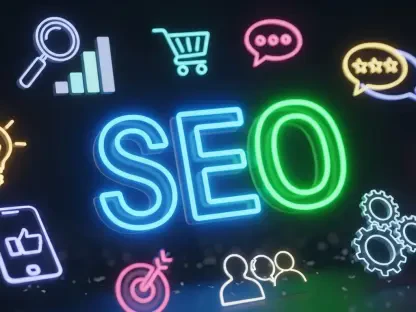The Digital Marketing Revolution: An Industry Overview
In today’s fast-paced digital economy, the landscape of advertising and performance marketing stands as a cornerstone of business growth, with billions of dollars invested annually in reaching consumers through online channels. This industry has become a vital engine for brands seeking to capture attention in an increasingly crowded marketplace, driven by the seamless integration of technology into every facet of campaign strategy. The rapid evolution of digital marketing reflects a shift from broad, untargeted approaches to highly sophisticated methods that prioritize precision and measurable impact.
Key segments such as data-driven strategies, automation, and personalization have emerged as defining pillars of this transformation. These elements enable marketers to tailor messages to specific audiences, optimize campaigns in real time, and maximize return on investment. Influential technologies like artificial intelligence (AI), machine learning, and advanced analytics play a central role, offering tools to predict consumer behavior and refine targeting with unparalleled accuracy. Major players, including global brands, specialized agencies, and technology providers like Google, Meta, and Adobe, dominate the space by innovating solutions that shape industry standards.
Beyond innovation, regulatory considerations surrounding data usage and consumer privacy have gained prominence. With growing scrutiny on how personal information is collected and utilized, compliance with laws such as the General Data Protection Regulation (GDPR) has become non-negotiable. This dynamic environment underscores the delicate balance between leveraging technology for growth and ensuring ethical practices that protect consumer trust, setting the stage for a deeper exploration of trends and challenges.
Key Trends and Innovations Driving the Industry
Emerging Technologies and Consumer Shifts
The digital marketing sphere is being reshaped by cutting-edge technologies that redefine how brands connect with their audiences. AI and automation streamline operations by handling repetitive tasks, while predictive analytics empowers marketers to anticipate consumer needs with remarkable precision. These tools enable the creation of hyper-targeted campaigns that resonate on a personal level, enhancing engagement across diverse platforms.
Consumer behavior is also evolving, with a clear demand for tailored experiences that reflect individual preferences and values. The proliferation of connected devices, from smartphones to smart home systems, coupled with the rise of voice search technology, has opened new avenues for interaction. Brands now have opportunities to engage users through innovative formats like voice-activated ads or seamless integrations into daily digital routines, capitalizing on these shifts to build stronger connections.
This technological wave presents a wealth of possibilities for marketers willing to adapt. Platforms leveraging augmented reality or interactive content are gaining traction, offering immersive ways to capture attention. As consumer expectations continue to climb, staying ahead requires a keen understanding of these emerging tools and a commitment to meeting audiences where they are, both literally and figuratively.
Market Growth and Future Projections
Digital advertising and performance marketing are experiencing robust growth, with global spending projected to increase significantly from this year through 2027. Recent data indicates that investments in digital channels have already surpassed traditional media in many markets, driven by measurable outcomes such as improved return on investment and enhanced campaign efficiency. These performance indicators highlight the value of technology in delivering tangible results for businesses of all sizes.
Looking ahead, the adoption of AI and data-driven strategies is expected to accelerate, with forecasts suggesting that automated systems will handle a majority of ad placements and optimizations by the end of this decade. This shift promises to further refine how campaigns are executed, focusing on real-time adjustments that boost effectiveness. Marketers can anticipate a future where consumer engagement becomes even more dynamic, fueled by insights derived from vast datasets and machine learning algorithms.
The trajectory of this market suggests a continued emphasis on integration and innovation. As brands invest in tools that bridge online and offline experiences, the potential for deeper audience connections grows. This forward-looking perspective emphasizes the need to prioritize adaptability, ensuring that strategies remain aligned with technological advancements and evolving consumer habits.
Challenges in Technology-Driven Marketing
Navigating the complexities of technology-driven marketing presents significant hurdles, with data privacy concerns topping the list. Consumers are increasingly wary of how their information is used, leading to trust issues that can undermine even the most well-crafted campaigns. Addressing these concerns requires a commitment to transparency and ethical data practices that prioritize user consent.
Technological challenges also loom large, particularly in integrating complex systems and managing the sheer volume of data generated by digital interactions. Many organizations struggle to unify disparate platforms into a cohesive framework, risking inefficiencies and missed opportunities. Additionally, the rapid pace of change in trends and consumer preferences intensifies competition, pushing marketers to constantly innovate or risk obsolescence.
Solutions to these obstacles lie in strategic investments and proactive measures. Adopting secure technologies that safeguard data, alongside upskilling teams to handle advanced tools, can mitigate risks. Furthermore, navigating regulatory and ethical complexities demands a focus on compliance and clear communication, ensuring that campaigns not only meet legal standards but also align with consumer expectations for integrity.
Navigating the Regulatory Landscape
The regulatory framework surrounding digital advertising has grown increasingly stringent, with laws like GDPR setting benchmarks for data protection worldwide. These regulations dictate how personal information can be collected, stored, and utilized, placing significant constraints on traditional targeting methods. Compliance is no longer optional but a fundamental requirement for operating in this space.
Such laws directly impact practices around data collection and consumer consent, requiring brands to obtain explicit permission before leveraging user information. Security measures must also be robust to prevent breaches that could erode trust or invite penalties. Marketers face the challenge of balancing these obligations with the need to deliver personalized content that drives results, often necessitating innovative approaches to audience segmentation.
Transparency plays a pivotal role in fostering trust with both audiences and regulators. By clearly communicating data usage policies and prioritizing user control, brands can build credibility in a landscape shaped by evolving laws. The ongoing development of privacy regulations suggests that adaptability will remain crucial, as future changes could further influence technology adoption and strategic planning in marketing efforts.
The Future of Digital Advertising and Marketing
Emerging technologies such as advancements in AI and machine learning are poised to redefine the boundaries of digital advertising. These innovations promise to enhance predictive capabilities, enabling marketers to anticipate trends and tailor campaigns with even greater precision. Alongside these developments, privacy-focused solutions are gaining traction, addressing consumer concerns while maintaining campaign effectiveness.
Potential disruptors, including new platforms and shifting consumer preferences, will also shape the industry’s trajectory. Audiences increasingly value authenticity and relevance, pushing brands to craft messages that resonate on a deeper level. Growth areas like voice search optimization and advertising on connected devices offer untapped potential, providing fresh channels to engage users in meaningful ways.
Global economic conditions and regulatory shifts will continue to influence how the industry evolves, requiring marketers to stay agile in response to external pressures. Innovation remains the cornerstone of competitiveness, with a focus on experimenting with novel approaches and refining existing strategies. Embracing change and anticipating consumer needs will be essential for sustained success in this dynamic environment.
Conclusion: Harnessing Technology for Marketing Success
Reflecting on the insights gathered, it becomes evident that technology has fundamentally reshaped digital advertising and performance marketing through data-driven strategies, AI automation, personalization, and precise tracking mechanisms. These advancements have empowered brands to achieve unprecedented levels of efficiency, engagement, and return on investment, marking a significant departure from earlier, less targeted methods.
Moving forward, marketers are encouraged to take actionable steps by investing in cutting-edge tools that enhance campaign capabilities and by forging partnerships with specialized agencies to navigate complex technological landscapes. A focus on continuous learning and adaptation has proven vital, ensuring that strategies remain relevant amid rapid innovation and regulatory changes.
Ultimately, the path ahead demands a proactive stance, with an emphasis on exploring emerging opportunities such as integrating new platforms and prioritizing consumer trust through ethical practices. By harnessing technology thoughtfully, the industry has laid a strong foundation for future growth, poised to deliver even more impactful connections between brands and their audiences.









